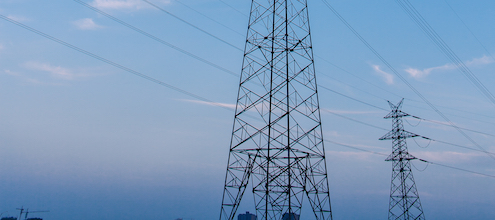
Carbon Pricing and the Case for (Green) Infrastructure
by Marc Lee
Our next report will explore the challenges and opportunities with different approaches to recycling revenues from carbon pricing. To better understand the trade-offs associated with each revenue recycling option, we commissioned a set of six papers authored by some of Canada’s leading policy thinkers. What are the advantages of each option? Under which conditions do they work best? Our new Revenue Recycling blog series provides a glimpse into some of these difficult questions, voiced first-hand by the authors of each paper.
When I was first asked to write about using carbon tax revenues to fund infrastructure, it was about a year ago. In the ensuing months, the Trudeau Liberals went on to champion infrastructure as a central plank of their election platform, and upon assuming government went to Paris to help hammer out a new global treaty to constrain carbon emissions.
In spite of this shift in federal orientation, the challenge articulated in my paper is even more relevant. The Paris Agreement’s target of limiting global warming to 1.5 degrees implies ambitious climate action needed from high per-capita GHG emitters like Canada. Infrastructure is a key part of that climate action, and anticipated infrastructure investment ($60 billion over 10 years) is insufficient to the task.
Canada’s Infrastructure Gap
Canada has an infrastructure gap, and a carbon tax is an ideal revenue source to address this pent up demand. In particular, Canada needs to invest in the infrastructure of a zero-carbon economy. Infrastructure investment is long-lived, and our carbon challenge is at least in part due to an infrastructure legacy of coal-fired electricity and natural gas pipelines into our homes, and freeways out to auto-dependent and resource-intensive suburbs.
A major green infrastructure agenda would accelerate the needed shift to zero-emissions urban, inter-city and freight transportation; it would expand clean electricity generation and build district energy networks; it would reduce our ecological footprint, make our communities more resilient to climate impacts, and retrofit our homes and buildings.
Using carbon tax revenues for infrastructure really amounts to scaling up what we are already doing. The federal gas tax is a de facto carbon tax, albeit with a smaller base, which already allocates revenues to infrastructure through the Building Canada Plan. Not all of that is green, but we also have experience with projects like the City of Vancouver’s Neighbourhood Energy Utility, a modern district energy system, as an example of new green infrastructure supported with gas tax dollars.
The Benefits of Infrastructure Investments
Investments in transit and green infrastructure can play an important role in overcoming the structural barriers to individual behavioural change. You can change your lightbulbs or wear a sweater, but you cannot, as a household, change how your electricity is generated.
Infrastructure investment also makes long-term economic sense in terms of enhancements to productivity, and short-term economic sense as a form of stimulus. Both long- and short-term effects are superior to tax cuts. And if we consider co-benefits, like improvement in health from phasing out coal or time-savings through reduced commutes, we definitely have a winner in infrastructure.
One of the biggest problems facing proposals for a revenue-neutral carbon tax is that people, unlike economists, just don’t get it. They may not like paying taxes but when they do they want to see results. That is, a carbon-pricing plan that funds infrastructure is likely to meet the test of public opinion.
Climate action is a matter of political will. There is much to be gained in economic benefits and quality of life from green infrastructure investments.
About the Author

Marc Lee is a Senior Economist in the BC Office of the Canadian Centre for Policy Alternatives. For the past six years he has been the Co-Director of the Climate Justice Project, a multi-year partnership with the University of British Columbia, funded by the Social Sciences and Humanities Research Council of Canada. Marc has authored and co-authored numerous publications on climate justice, inequality, and public finance.
Revenue Recycling Blog Series:
1. Reducing existing taxes
2. Transferring revenue to households
3. Investing in clean technology
4. Investing in public infrastructure
5. Reducing government debt
6. Providing transitional support to industry




Comments are closed.